Today in the gardens and in summer cottages you can find a huge number of different fruit trees that have individual characteristics and taste qualities of fruits and berries. Apple trees, pears and plums are considered the most popular inhabitants of the site, without fragrant fruits of which it is impossible to present their lives. However, not all gardeners know about the most recent innovations of world breeders who have brought a rather unusual variety of fruit trees - colonum-shaped.
Such a form boasts a plum, which only begins to spread in Russia and conquer the love of gardeners. According to reviews, Colon's Plum has a number of advantages that are expressed in a large crop and large fragrant fruits. Landing and care for such a culture will not cause difficulties, especially if the usual plum tree grows on your site.
In this article, consider the description of the variety of colonum-like plums, as well as highlight the most popular varieties today. We note the important moments of agrotechnics of growing colonum-like plums.
Features and description of colonum-like plum
Colon-shaped plum appeared relatively recently. Another 20 years ago, no one knew about her existence. Of all the colonum-like plum trees were led later than the rest. That is why popularity and fame of such a variety is rather low.
For the first time, colon-shaped trees appeared about the 60s of the last century and it happened absolutely by chance, nobody performed targeted actions. It happened in the United States, when one local breeder examined his garden. He found a rather unusual branch on an apple tree, which differed significantly from the rest. The branch was thicker than usual and grew up vertically, besides, it turned out to be completely covered with large apples. It was interested in the breeder and he tried to propagate this unusual branch within 2 years. As a result, the first grade of coloniary fruit trees - "leader" appeared.
The breeders quickly found out that colon-shaped varieties have a huge advantage, give great crops and relatively undemanding. It was this that led them to the elimination of various varieties of colonum apple trees, then pears and in recent years new varieties of colonum-like plum are actively created.
Colon-shaped plum is not the result of breeding or genetic engineering, it's all the only natural mutation that a person took on armament and spread.
Colonial Plum Description:
- Colon-shaped plum is a fruit tree that belongs to the pink family.
- Unlike the usual plum tree, the colon's hair has a not such a powerful root system.
- The height of the colonum-like plum on average reaches approximately 1.5-2 m, while the usual plum can grow up to 15 m. This is one of the most important features of such a variety of drains. Thanks to this, you can easily place a few trees-colors on a small plot of land.
- The main feature of the colonum-shaped plum is a compact and narrow crown, which has a pyramidal form. Thanks to this, it is very easy to care for the tree and collect the harvest from it.
- Colon-shaped plum has almost no branches, which facilitates the process of trimming and forming the crown.
- In addition to the central trunk, the colon-shaped plum there are copiers, which in length reach from 2 to 15 cm. They have a pointed form. There are also riders that are much shorter than a spear and in length reach approximately 1-4 cm. Around the ridge are annual rings and fruit kidney. All these formations are the basis of the future rich harvest of Colon's Plums.
- The fruction of colonum-shaped plum begins on the second year after landing, with a lot of plums on the branches. At first glance, it may seem that the branches will break from such gravity. But this is not so, the wood in this variety is very dense.
- On average, from one tree can be collected from 6 to 12 kg of drain, which is a high indicator.
- Depending on the variety, you can highlight a colonum-shaped jam, blue, purple-purple.
- Up to 7 years, the yield of colonum-like plum is constantly increasing, then becomes stable, and at the age of 13-17 years old the tree ceases to give large and abundant yields.
- This type is characterized by good endurance to frost. Can carry up to -30 degrees.
Popular varieties of colonumal plum
Colon-shaped plum is still very popular among domestic gardeners, as it was revealed relatively recently. To date, a small number of varieties of this variety are known, but they have already managed to win the love of gardeners. Consider the features of the most popular varieties of Colon's Plums.
Colon's Plum "Imperial"
- Colon-shaped plum Imperial is considered one of the most popular and frequently found in Russia.
- This is the only variety of colonum plums capable of self-pollution, so you can enjoy one tree to get a large harvest.
- A distinctive feature of the colon-shaped plum of the grade Imperial is a rather large size of the fruit. The weight of one plum on average can reach about 55 grams.
- In the form of plums of this variety, a slightly rounded with a wider part of the base and the vertex siled. The dent is also present on the plum.
- The skin of the drain is quite dense and painted in different shades. Most often there are purple-pink and brown-red color.
- The plums are very juicy and sweet, the optimal degree of maturity reaches the middle of August.
- In the height, the colon-shaped plum tree of this variety can reach a height of 1.5-2 m.
- The crown of this tree is very compact and consists of small caps and rill, which practically eliminates pruning.
- On average, the life expectancy of one tree of colonum-shaped plum is approximately 15-17 years.
- The collected crop can be stored in a fresh form over two weeks.
Colon-shaped plum "Blue Sweet"
- In the height of the Tree Colon's Plum Plum Sweet can reach only 2-2.2 m.
- This tree and a compact crown differs that has a narrow pyramid shape, which in diameter maximally reaches 90 cm.
- The central trunk of the tree is covered with fruit-colored rockets and copies, which are thickly cut by plums at the time of ripening.
- This colonum-like plum is characterized by a high yield, from one tree on average you can collect from 12 to 15 kg. This weight is perfectly withstanding the branches of the tree.
- The first plums begin to ripen already for the second year after landing.
- Unlike the grade of the Imperial, this species cannot be self-polished, so the variety of Blue Friend must be planted nearby nearby.
- The main advantage of this variety is very large fruits. The weight of one plum can reach 75 grams.
- The form of the fruit of this variety oval and slightly flashed. The color of the skin is dark purple, sometimes it seems almost black.
- The pulp is yellow or pink, the taste is sour and sweet and very juicy.
- Plums are completely ripening in the second half of August.
Colon-shaped plum "Commander"
- Colon-shaped plum variety Commander in height can reach the maximum as possible.
- The yield of the tree is high, which is determined by the presence of shortcaps and rill, at the time of ripening dense fruit.
- The crop completely matures about the middle of the summer.
- Differs the variety and sizes of fruits. On average, one plum has a weight of 50-55 grams.
- Plums have an oval or elipeoid shape, a tight purple skin.
- The pulp of a yellow drain, which is very juicy and tastes sweet with a small refreshing acid.
- Inside fruits there is a small bone, which is completely separated from the pulp.
- The plums of this variety are suitable for consuming fresh, as well as for preserving.
Colon's Plum "Mirabella"
- Another pretty popular variety of colonum-like plums.
- Colon-shaped plum Mirabel has a yellow painting fruit with a small reddish blush on her side.
- It is a sufficiently humid variety. The ripening of fruits begins in the second year after planting a tree.
- Pleases this variety and good yield.
- Plums of this variety with yellow skin have a round shape and middle value. On average, one plum can weigh approximately 45 grams.
- The pulp of the fetus is quite dense and sweet to taste.
- Full ripening plums comes to mid-August. Another distinctive feature of this variety is that plums can hang on the branches for a long time without falling.
- In height, the tree maximizes 1.7 m.
Colon's Plum "Fortune"
- This variety of colonumal plums can be attributed to early ripening raids.
- Full ripening of fruit occurs in early August.
- The grade is pleased with a rather high yield of large fruit, the weight of one can be about 60 grams.
- Color draining pinkish red with a small raid. Their form is rounded with a pointed tip.
- The pulp of yellow color, very juicy and incredibly sweet.
Colon-shaped plum "Russian plum"
- In height, the tree of this variety can reach approximately 1.7 m, therefore it is considered a carlikov. In this case, the colon-shaped plum does not require trimming, as side branches are practically not formed on the tree.
- The variety is characterized by good yield and excellent endurance towards pests and diseases.
- Plums of this variety of small size. The weight of one on average reaches approximately 35-40 grams.
- The fruit is very sweet with small sourness.
Colon's Plum "Arbat"
- This is a relatively young variety of Colon's Plum, which is just starting to take off in our gardens.
- In height, this fruit tree reaches about 2 meters and is characterized by a rather compact crown with a small number of lateral branches.
- The variety is characterized by good yield. From one tree plums can be collected on average 15 kg of juicy and delicious fruits.
- Plums have a rounded shape and bright yellow. The flesh is very juicy and sweet.
- The main feature of the variety is the good sinking flexibility. They can be stored for a long time in a fresh form.
Colonic grade "Oscar Plus"
- This variety of colonum-like plums can be attributed to the time of the ripening of fruits. The harvest of delicious and juicy drains can only be collected in September.
- In height, such a tree can maximize 2 meters and has a rather compact crown in the form of a pyramid.
- Plums spherical, slightly flashed, medium sized. The weight of one plum can be approximately 45-55 grams. The color of the sort of grade can vary from red to dark brown.
- The fruit is sweet and juicy with small sourness.
Preparation before planting colonum-like plums
To start learning how to plant a colonum sink on its site, it is important to pay attention to the preparatory work. From this, first of all, the yield of the future tree will depend on. First of all, it is important to seriously refer to the choice of colon-shaped plum seedlings, as well as to the search for the most suitable place for landing on its plot. And only after that you can proceed to the process of planting seedlings.
Stage 1. Selection of varieties and seedlings Colon-shaped plum
- The choice of a specific variety of colonum-shaped plum depends on your personal preferences. Choose a variety depending on the color of the fruits and their yield, as well as taking into account good resistance to high frost and disease.
- For the Moscow region and the central part of Russia, such varieties of colonum-like plums are suitable as the Imperial, Blue Sweet, Smolyanka, Timiryazev's memory.
- Colon-shaped plum relatively recently appeared in domestic gardening, so it is not in all garden centers and nurseries it can be found its seedlings.
- Do not risk and do not acquire colonum-like plum seedlings in the natural markets and the roads. Since this form is still known, you are unlikely to get the desired landing material.
- You can buy a colonum-shaped plum in specialized nurseries who are professionally engaged in breeding plants. Here you can get seedlings that have passed adaptation in your climate. Also before buying, you can get a professional advice regarding landing and care for this species of fruit trees.
- Complement is needed by annual seedlings of colonum-like plums, as more adult copies will be long and hard to fit.
- Before buying, it is important to carefully inspect the seedlings of trees. Pay attention to the root system. It must be well branched, without damaged, broken or dry roots. The upper part of the seedlings should also be in good condition. On the branches there should be no signs of diseases and pests.
Stage 2. Choosing a place to land a colonum-like plum
- From the correct selected place on your site will depend on the further growth and fruction of the tree.
- Colon-shaped plum prefers to grow on solar sites with plenty of sunlight. This culture is contraindicated with shading, as it will eventually affect the crop, and unpleasant diseases may appear.
- The selected area should be protected from strong winds and drafts.
- It is also necessary to trace the soil waters in the chosen place to lay down deep enough, ideally at a depth of 1.5 m. Colon-shaped plums do not endure excessive moisture accumulation in the roots.
- Colon's sink can be planted even on a very small plot of land. One sapling can have only 50 cm of the plot.
Stage 3. Choice and Soil Preparation for Planting Colon's Plum
- For normal growth and development of colonum-like plums, a light and nutritious substrate is necessary.
- It is not necessary to plant plum saplings in lowlands, as groundwater is often stared, and this is detrimental for trees.
- In lowlands is also much colder than on the elevation.
- Before boarding the selected area, you need to process well and move at least to the bayonet shovel. During the processing, you can add a slightly humoring into the soil, after which the surface is loosen and dissolved.
The process of landing colonum precision
- First of all, it is necessary to determine the optimal timing of the colonum-like plum. If you live in the southern regions of Russia, the landing can be exercised in the fall. If you are in the central part or in the suburbs, you will fit the colonumal plum in the spring.
- In the spring, after a complete warming of the Earth, you can start planting culture.
- At the selected area, prepare landing pits or grooves. The size of one pit should be approximately 40 cm deep and 40 cm in width. The distance between individual seedlings should be at least 50 cm, and between the rows is at least 1 meter.
- Then it is necessary to prepare a fertile soil mixture, which may consist of 4 kg of humus and garden soil. Do not add mineral or other fertilizers during landing, except humus. Seedling can die.
- At the bottom of the landing pit, you can put a drainage layer if the selected place is close to groundwater. As a drainage, use a broken brick or small stones.
- Next, put a little fertile soil and put a seedlove on it. Note that the root neck must be 3-4 cm above the surface of the soil.
- Purify the roots of the seedling of colonum-like plums, then pour the hole to the soil. Carefully compact her hands.
- Immediately after landing, you can pour seedlings with root growth stimulants, for example, rhoin. This will help young trees faster to root.
Agrotechnical cultivation of colonumal plum
In order for your site, a beautiful and healthy colonum-like plum tree has grown with a lot of juicy fruits, it is important to take care regularly. In the process of care for this culture there is nothing complicated, slightly attention and it will give you a rich harvest.
Watering Colon's Plums
Colon-shaped plum prefers a moderately humid environment and reacts very well to watering. Watering the trees of this variety is necessary for the entire season: in spring, summer and autumn. Watering mode roughly looks like this - once abundant irrigation per month. If the case concerns a dry period, the amount of irrigation increases.
Swimming and mulching of colonumal plum
Periodically, the soil in the attractive circle is recommended to loose. Thus, you are provided with oxygen access to the root system of the tree and make the soil easier. During loosenings, remove all weeds. To prevent excessive evaporation of moisture, the rolling circle can be meditated by peat or humus.
Falker Colon's Plum
For active growth and good yield, the colon-shaped plum needs regular feeding. As a fertilizer used urea, 50 grams of which divorces in 10 liters of water. One plant accounts for 2 liters of solution. The first feeding is carried out during an active vegetation, the second - 2 weeks after the first feeding, the third - 2 weeks after the last.
As a fertilizer, you can use the infusion of a cowboy or saltper.
Pruning Colon's Plums
Colon-shaped plums practically do not need trimming, as they have almost no side branches. The only one, every year you need to exercise sanitary trimming of damaged and sick branches. Trimming may need if the top is the top and several shoots have grown out of it. In this case, one is the strongest, and the rest are cut.
Preparation of Colon's Plum for Winter
Young trees are very afraid of frosts very much, so with special care it is necessary to prepare trees to the onset of cold weather. First of all, the roller barrel can be closed with foliage and straw, and the lower part of the barrel can be closed with a sweetheart, since it can damage rodents. From above, the rolling circle is additionally covered with snow or other observer material.
Photo of colonum-shaped plum
Colon's precision plum is an excellent alternative to the usual tree of this delicious berry, which will allow you to save space on the plot and every year getting a rich harvest of sweet and juicy fruits.

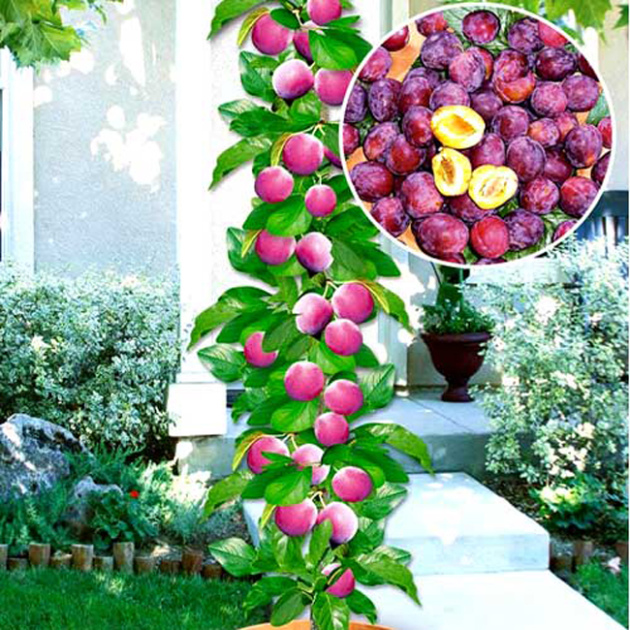
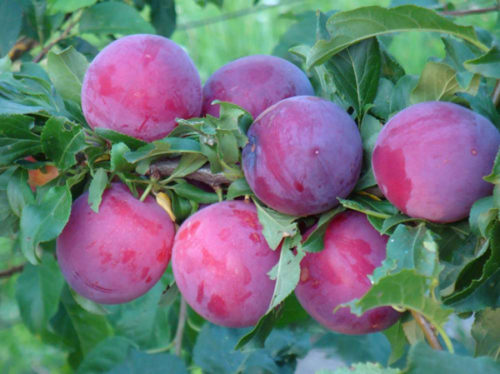
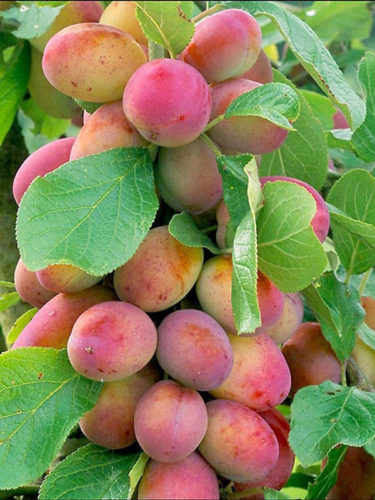
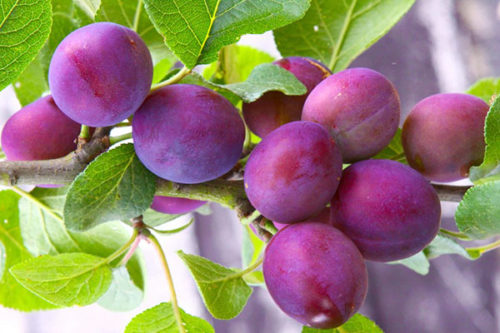
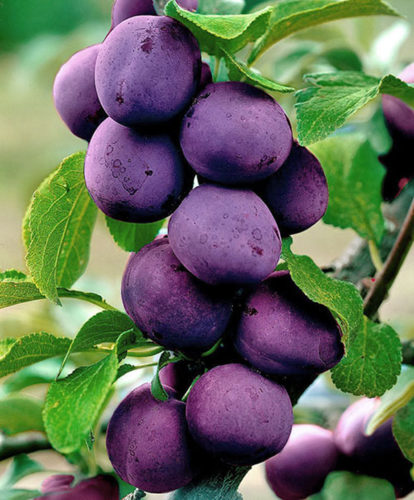

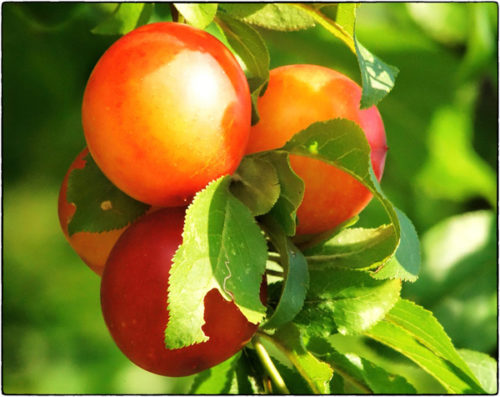
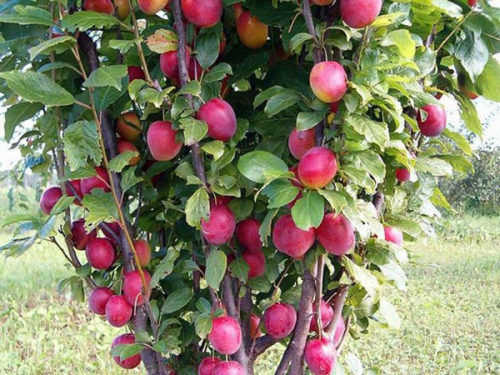
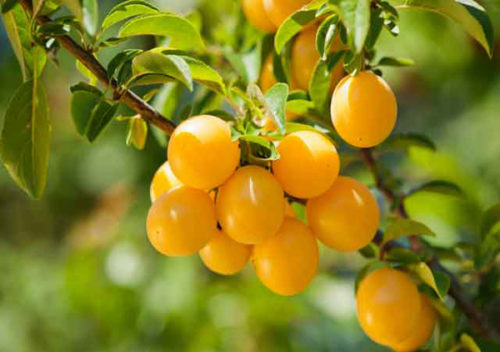
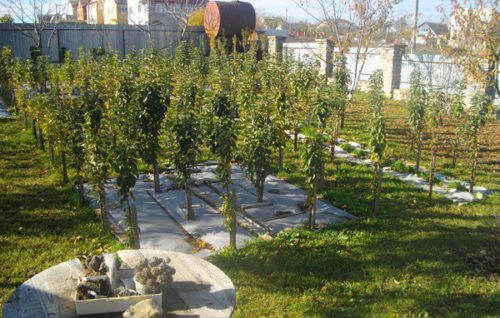

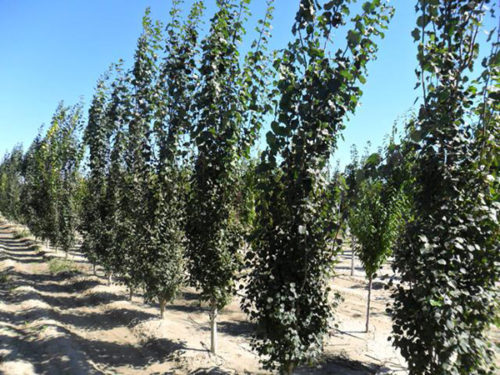
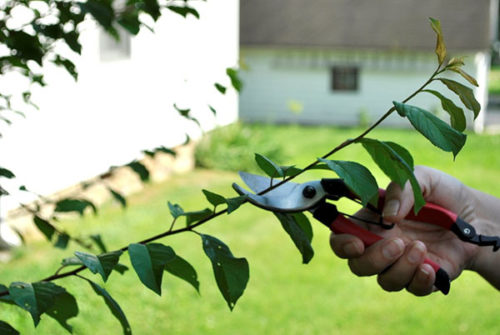
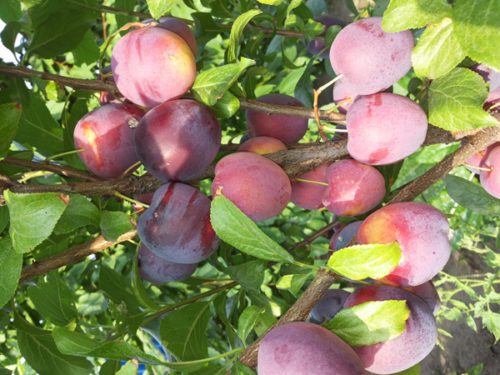
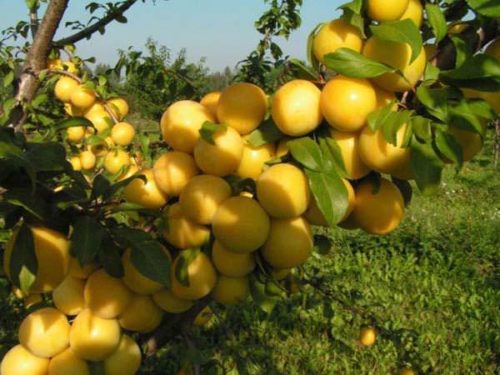
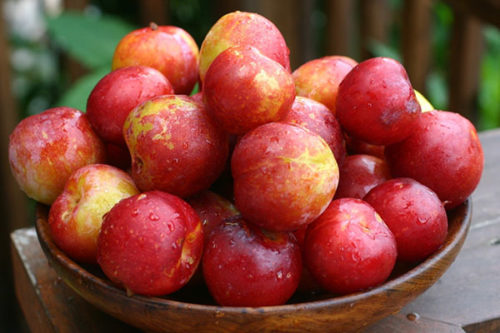
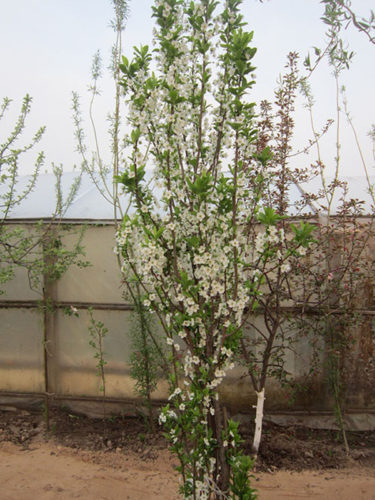
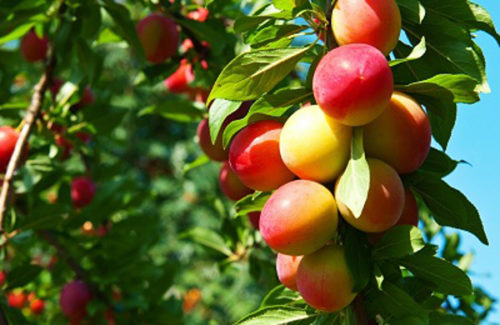












 Start a discussion ...
Start a discussion ...